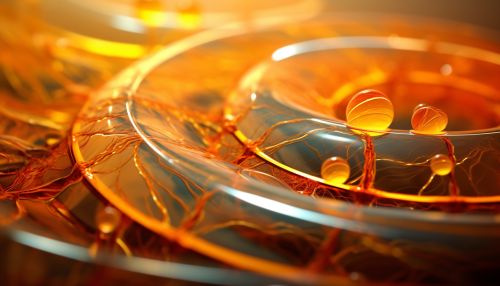Citric Acid Cycle
Overview
The citric acid cycle, also known as the Krebs cycle or the tricarboxylic acid (TCA) cycle, is a series of chemical reactions that occur within living cells to generate energy through the oxidation of acetate derived from carbohydrates, fats, and proteins into carbon dioxide and chemical energy in the form of adenosine triphosphate (ATP).


Biochemical Function
The citric acid cycle is a key component of the cellular respiration process. It takes place in the matrix of the mitochondria where it oxidizes acetyl-CoA to produce ATP, nicotinamide adenine dinucleotide (NADH), and flavin adenine dinucleotide (FADH2). These products are then used in the electron transport chain to produce additional ATP, the primary energy currency of the cell.
Steps of the Citric Acid Cycle
The citric acid cycle consists of eight steps, each catalyzed by a specific enzyme.
1. **Condensation**: This is the first step where Acetyl-CoA combines with oxaloacetate to form citrate, a six-carbon compound. This reaction is catalyzed by the enzyme citrate synthase.
2. **Isomerization**: The citrate is then rearranged to form its isomer, isocitrate, by the enzyme aconitase.
3. **First Oxidation**: Isocitrate is oxidized by the enzyme isocitrate dehydrogenase to form oxalosuccinate, which is then decarboxylated to form alpha-ketoglutarate, a five-carbon compound.
4. **Second Oxidation**: Alpha-ketoglutarate is further oxidized and decarboxylated by the enzyme alpha-ketoglutarate dehydrogenase to form succinyl-CoA, a four-carbon compound.
5. **Substrate-level Phosphorylation**: Succinyl-CoA is converted into succinate by the enzyme succinyl-CoA synthetase, generating a molecule of guanosine triphosphate (GTP), which is readily converted to ATP.
6. **Third Oxidation**: Succinate is oxidized to fumarate by the enzyme succinate dehydrogenase, generating FADH2.
7. **Hydration**: Fumarate is converted into malate by the addition of a water molecule, a reaction catalyzed by the enzyme fumarase.
8. **Fourth Oxidation**: Finally, malate is oxidized to regenerate oxaloacetate, the starting molecule of the cycle, by the enzyme malate dehydrogenase, generating NADH.
Regulation of the Citric Acid Cycle
The citric acid cycle is tightly regulated at key steps to ensure efficient energy production. This regulation is achieved through feedback inhibition, where the end products of the cycle inhibit the enzymes that control the rate-limiting steps. For example, high levels of ATP and NADH, the energy-rich products of the cycle, inhibit the enzymes citrate synthase and isocitrate dehydrogenase, slowing down the cycle. Conversely, a high level of ADP, a signal of low energy, stimulates the cycle.
Significance in Cellular Metabolism
The citric acid cycle plays a central role in cellular metabolism, as it connects carbohydrate, fat, and protein metabolism. The cycle provides the precursors of certain amino acids, as well as the reducing agent NADH, used in numerous biochemical reactions. Its central importance to many biochemical pathways suggests that it was one of the earliest established components of cellular metabolism and may have originated abiogenically.
